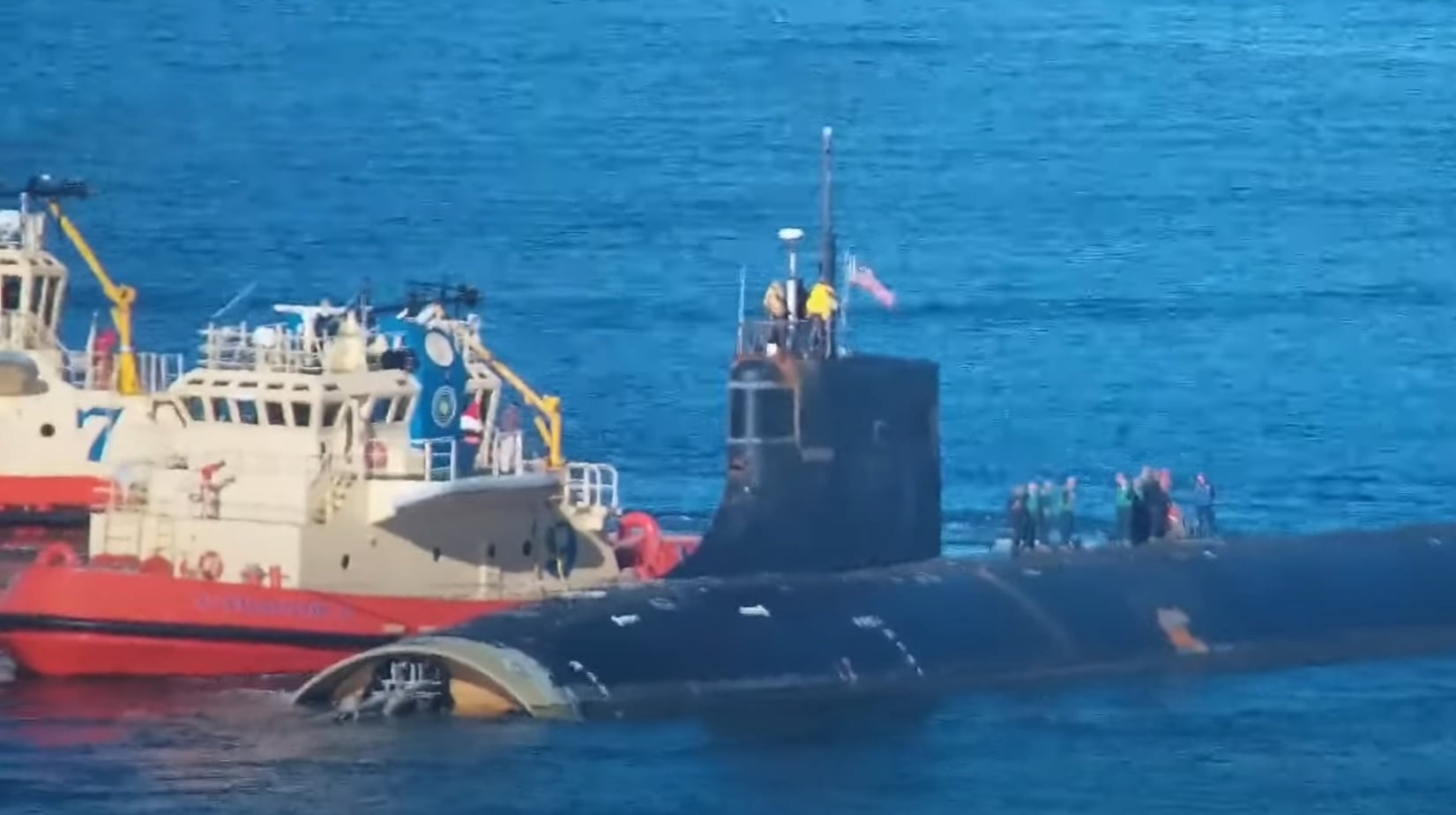The U.S. Navy has completed an investigation into an accident involving one of its submarines, the USS Connecticut, that hit an undersea mountain in the South China Sea last October. Investigators concluded that the accident was preventable.
The Navy determined that the submarine grounded after it ran into an uncharted sea feature. Its report said the crew of the nuclear-powered Seawolf-class submarine made navigation mistakes and planned poorly for risks. The command team has already been relieved.
An Accumulation of Errors
Eleven sailors sustained mostly minor injuries in the accident. The investigation revealed that the collision could have been much deadlier. It could even have caused the loss of the entire sub. The submarine’s nuclear power plant was not damaged, but its ballast tanks and sonar sphere were, and this prevented the boat from submerging.
The investigation concluded that the submarine crash “resulted from an accumulation of errors and omissions in navigation planning, watch-team execution, and risk management that fell far below U.S. Navy standards.
“Prudent decision making and adherence to required procedures in any of these three areas could have prevented the grounding,” investigators found.
You can find the entire report here.
Failures to Recognize Danger
There are ten underwater hazards in the part of the South China Sea where the submarine was operating, but the command team thought the area was clear. The Navy believes the senior officers and noncommissioned officers should have better monitored their navigation systems, including sonar.
The report said, “They should have recognized the ship would be in restricted waters based on the planned track passing near multiple navigation hazards.”
If the crew had known about these danger points, additional sailors could have been placed on watch duty, the report said. These sailors could have mitigated the navigation risks.
Stars and Stripes noted that, “Before the crash, at least one sailor detected sonar readings that were not matching the navigational chart of the undersea area. However, the officer of the deck did not report the hazard to the Connecticut’s commanding officer, who was not standing duty at the time.”
The officer of the deck should have made sure the commander knew of the danger and that the vessel slowed down, according to Rear Adm. Christopher Cavanaugh, the report’s author.
The navy brass relieved the sub’s skipper, Cmdr. Cameron Aljilani. Lt. Cmdr. Patrick Cashin, the executive officer, and Master Chief Sonar Technician Cory Rodgers, chief of the boat, were also replaced. Investigators also found that the command team did not sufficiently discipline junior sailors after the crash.
There were additional disciplinary actions, according to the Drive.com. The report also “recommends nonjudicial punishments for the submarine’s navigator and assistant navigator, as well as the officer of the deck, and the quartermaster of the watch on duty at the time.”
After the crash, the Connecticut made it to Guam and limped on to San Diego in a slow, painstaking voyage that required the sub to sail on the surface for 6,000 miles at 10 knots. It finally returned to its home port in Washington state.
A Cautionary Tale
The Navy is doubling down on better training and certification to ensure submarine crews always maintain situational awareness. A spokesperson for the Navy said there should be a balance between taking risks in contested seas and keeping all submarines safe across the force. The Navy also wants junior sailors to speak up when they have concerns about navigation.
The Navy is known for relieving commanders for far less than this when they are not exhibiting proper leadership. This incident will stand as a cautionary tale for sailors throughout the service. Submarine commanders will make sure they oversee a command climate defined by high proficiency.
Submarines operating in the Indo-Pacific region have a dangerous mission, especially when they are patrolling in the same areas as Chinese vessels. Discipline will be quick for future preventable mishaps.
Now serving as 1945’s Defense and National Security Editor, Brent M. Eastwood, PhD, is the author of Humans, Machines, and Data: Future Trends in Warfare. He is an Emerging Threats expert and former U.S. Army Infantry officer. You can follow him on Twitter @BMEastwood.

